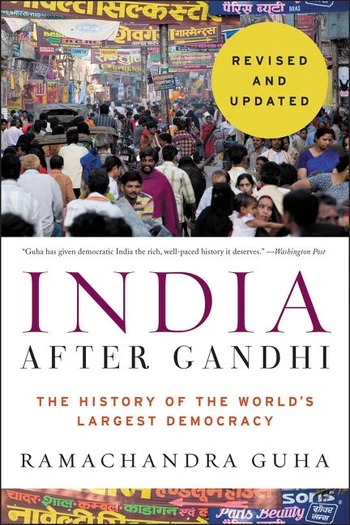Book Review by : Sonawane Tushar, MGV’s, Loknete Vyankatrao Hiray Arts Science and Commerce College, Panchavati Nashik "India After Gandhi: The History of the World's Largest Democracy" by Ramachandra Guha is an ambitious and deeply insightful account of
Read More
Book Review by : Sonawane Tushar, MGV’s, Loknete Vyankatrao Hiray Arts Science and Commerce College, Panchavati Nashik
“India After Gandhi: The History of the World’s Largest Democracy” by Ramachandra Guha is an ambitious and deeply insightful account of India’s post-independence history. The book spans over six decades of India’s political, social, and economic transformation since it gained independence in 1947.
Ramachandra Guha, a prominent Indian historian, takes readers through the intricacies of India’s development as a modern democratic nation. The narrative covers pivotal moments and struggles, from the immediate aftermath of Partition and the assassination of Mahatma Gandhi, to the political challenges of the 1970s, the rise of regional identities, economic reforms, and the evolving role of India in the global context.
Guha covers a wide range of topics—political events, social movements, economic shifts, and cultural changes—through the lens of India’s democratic journey. The book doesn’t just focus on the political elites or the central government, but also includes discussions about marginalized communities, regional dynamics, and grassroots movements.
Guha provides thoughtful analyses of key figures like Jawaharlal Nehru, Indira Gandhi, and other leaders, offering both admiration and critique where necessary. His nuanced perspective helps readers understand the complexities and contradictions within the country’s leadership and their impact on India’s evolution.
The author writes in an engaging, narrative-driven style, making complex historical events and political ideas accessible to readers with varying levels of familiarity with Indian history.
The book does not shy away from examining both successes and failures in India’s democratic experiment. It delves into challenges such as corruption, political instability, religious tensions, and inequality, while also highlighting achievements in education, economic growth, and social mobility.
Guha’s deep research and access to both primary and secondary sources give the book authority. His ability to weave together historical facts with human stories makes it a compelling read.
At over 900 pages, the book is dense and comprehensive, which could be overwhelming for some readers. It requires significant time and commitment to read in full, and at times, its level of detail may feel exhaustive.
While the book addresses political and social changes in-depth, it does not focus as much on the cultural aspects of post-independence India. For readers interested in art, literature, and cultural movements, this might feel like a missing piece.
“India After Gandhi” is a landmark work in understanding the history of modern India. It offers a rich, multidimensional view of how India navigated its challenges as a young democracy and how it continues to evolve. This book is essential reading for anyone seeking to understand the complexities of Indian politics, society, and the ongoing challenges of democratic governance. Its thorough research and balanced approach make it one of the most comprehensive books on post-independence India, though its length and focus on politics may make it more suitable for readers with a serious interest in history and political science.
Show Less

